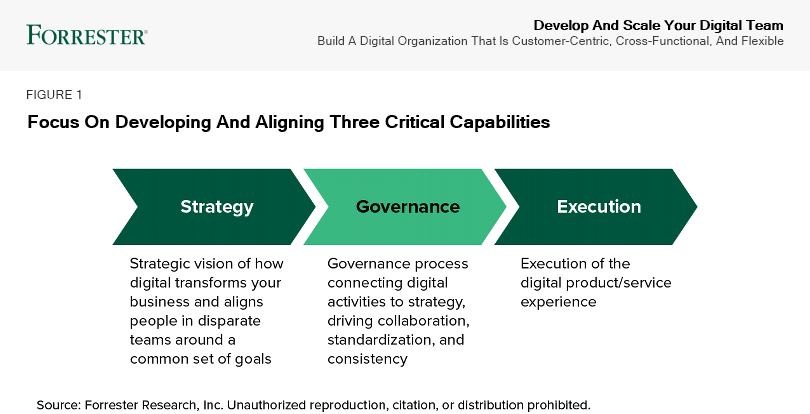Balance Digital Accountability To Optimize Digital Teams
At Forrester, we are often asked the question, “What is the best organizational structure?”
The trouble is … there is no one-size-fits all answer.
A multitude of factors feed into the answer: Is your firm single- or multi-brand? What is your geographical scope and regional structure? What is your corporate governance and budgeting process? How sophisticated is your technology organization? How much of your business takes place online? How rapidly are new business models reshaping your industry?
While there is no “silver bullet“ answer, there are principles to help guide digital leaders as they decide what organizational structures and alignments are best for their business.
Digital leaders must focus on developing and aligning three critical capabilities:

In terms of digital team structures, three common digital organizational structures have emerged. As firms scale, however, centralized and distributed structures constrain the ability to maintain digital growth beyond a single business unit.
Centralized: Strategic functions and digital execution activities are centralized with little governance, as strategy and execution are within the same team.
Distributed: Strategic functions and digital execution activities are embedded within business units or local/brand teams with little governance, as strategy and execution are heavily localized within the disparate teams.
Federated: This entails a centralized strategic function, with digital execution activities embedded within business units or local/brand teams and governance (guardrails) optimizing decisions and empowering line-of-business teams to differentiate their digital experiences as close to the customer as possible.
To find out more about the dynamics, alignments, and responsibilities within these structures, see our latest report, Balance Digital Accountability To Optimize Your Organizational Structure.
